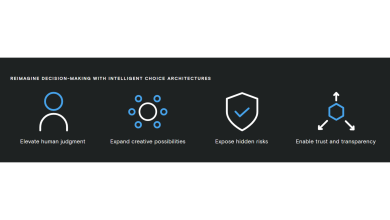
The Bank of England has raised concerns about the soaring valuations of AI tech companies. The phrase “AI bubble” hints at overhype: inflated valuations, sweeping promises and a rush of capital that may not align with current capabilities.
Startups valued in the billions with little proven revenue, companies slapping “AI-powered” on existing products, and a race among investors to secure a piece of the future.
This has, of course, led to some exuberant-sounding valuations. OpenAI is now worth $500bn, Anthropic almost tripled its valuation recently, while AMD briefly gained $80bn, and Oracle gained about $250bn in September after announcing better-than-expected results.
That sort of froth is unsustainable. On some fronts, the parallels with dot-com optimism are hard to ignore: it burst in 2000, but did websites or the internet disappear? Bursting or popping implies collapse, and the fundamentals suggest something different. Unlike earlier tech bubbles, AI is already embedded in workflows across sectors, from marketing, healthcare, logistics, and research.
Productivity gains, though uneven, are real, and adoption is accelerating in both enterprise and consumer markets. What may burst is not AI itself, but the valuations of companies that fail to move beyond demos into durable products.
Along with the BoE’s view that the current hype ‘leaves equity markets particularly exposed should expectations around the impact of AI become less optimistic’, the MIT research showing that 95% of organisations are getting zero return from their investments in generative AI, is making people nervous.
Basically, we are expecting too much, thinking big tech companies are ahead of their proclamations and generally not getting much return in the short-term. The long-term return is yet to be determined.
AI research in many sectors can be incredibly powerful, but it seems that we’re not all sure where it is best used. Blanket usage of generative AI tends to make headlines through its mistakes, and this erodes trust in its usage. But the possibilities of helping overwhelmed healthcare professionals, innovating in drug development, fraud detection, translation and process automation are moving along steadily.
The latter never sounds as sexy as something that will eat up jobs or relieve bosses of tasks and responsibilities, but it still needs funding to continue advancing.
The Bank of England is not the only market watcher to share its concerns. The International Monetary Fund has also warned that trouble may be ahead if investor appetites wane. The US Fed minutes continued to show the ongoing AI stock rally even though the government is still in shutdown.
The chorus here was less nervous but more aware that the tech upswing might not be built on solid ground. Others are attuned to the possibility of higher risks of falls in US stocks, but still married to the AI optimism – JP Morgan’s Jamie Dimon feels that AI will ‘in total pay off’ and the real issue is that we all need to get used to some high levels of uncertainty.
When markets hate uncertainty, this could be a tough pill to swallow and shake off many investors who may decide that the romance with AI is just too tempestuous. History suggests the cycle ahead looks less like a crash and more like consolidation. Capital will flow towards fewer, stronger players, infrastructure firms will stabilise, and applied AI consultancies will thrive by bridging the gap between hype and use.
But questions are already being raised about recent investment sprees being somewhat circular, as Nvidia pledges to invest in OpenAI, which would result in that money being spent on more of its own processors. Meanwhile, OpenAI agrees to buy AMD chips and receives a warrant in that chipmaker, which amounts to a ten per cent stake.
The bubble may deflate in parts, but the long-term trajectory points to AI as a lasting general-purpose technology rather than a passing boom. If investors do start the flee, it won’t be the issues of big tech names that are a problem for the rest of us; it will be those missed opportunities to innovate around real-life problems where AI could do some heavy lifting.
With the latest headlines and observations from the IMF and BoE, investors are likely weighing expectations against actual results. This is not a bad idea. The initial AI investment rush is likely over, and ROI is what is expected.
In return, we all benefit from more solid investments in areas where real progress is made, tools are created that businesses can actually use and benefit from, and the AI cooling can finally consolidate into something useful, less hyped and rushed.



